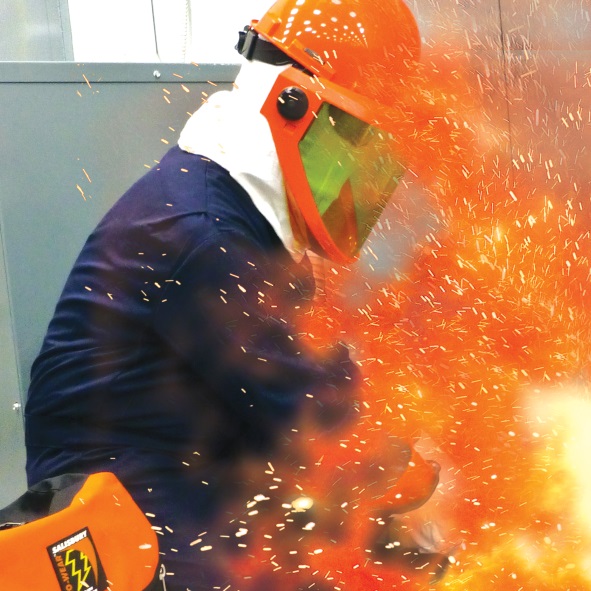Arc Flash!
If you thought an electrical shock was bad, you haven’t seen anything yet. With 30,000 electrical shocks/arc flash accidents occurring each year, it benefits you to know the facts.
First of all, what is Arc Flash?: Where as a normal electrical shock will send an electrical current through your body on contact, Arc Flash sends the short circuit current through the flow of air. This results in an explosion that will go in through your body and find an exit point through your hands, feet or head. The results will not be pretty.
Why is Arc Flash so dangerous?: The temperature rises to 35,000 degrees Fahrenheit. This is 4 times hotter than the sun 18″ from your body.
With all jokes aside the statistics for Arc Flash are alarming.
*There are 1000 fatalities due to electrocution that occur each year.
*About 10 Arc Flash explosions happen in electrical equipment each day.
*2000 workers are treated yearly for burns.
This is not only for high voltage. Fatalities can occur at only 7 1/2 Watts @ 110 Volts.
What can be done to protect yourself?: Only qualified, trained personnel may perform energized electrical systems. All that handle these kind of systems must wear proper PPE. Inspect all PPE before use. Must be rated for voltages they are being used on.
Proper PPE:
- Tools (insulated)
- Clothes
- Labels
- Training
- Eye, Ear, Face
How to select proper PPE:
- Non-melting, flammable materials
- Fire Rated shirt, pants, coverall
- Cotton underwear – shorts & shirts plus Fire Rated shirt and pants
NOTE: double layer switching hood and hearing protection required
- Cotton underwear, FR shirt, pants, and coverall or cotton underwear plus two FR coveralls
- Cotton underwear plus FR shirt and pants plus multilayer flash suit
Safety Procedures:
osha lock out tag out
OSHA Lock out Tag out Procedures:
8 step shut down
- Create a Work order describing work to be done
- Inform operator and supervisor about work to be done
- Prepare for shut down
- Shutdown/turn off equipment
- Isolate from energy source
- Apply Lock out/tag out
- Release all potentially hazardous stored or potential energy
- Verify the isolation
5 step restart
- Assure equipment operationally intact, clear all personnel & tools
- Ensure employees are safely positioned
- Assure lock out/tag out is removed from each energy-isolating device by authorized employee only
- Notify affected employees of lock out/tag out removal and that work has been completed
- Completed work order must be signed off by employee and manager
So in conclusion, be safe, wear proper PPE, call a professional…Wink Wink…Nudge Nudge…Us (G Technology) and don’t get electrocuted!










